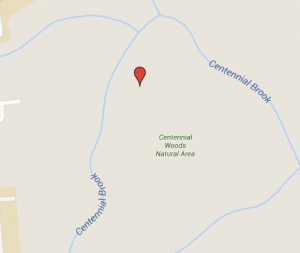Institutions. What norms and/or institutions regulate human behavior and nonhuman activity at this site? How have these changed, and might they change in the future?
Largely the public uses Centennial Woods. Before, our present time Centennial woods was largely used by the school district. In the past it was used for ROTC training and for skiing in the 1980’s. Today this site has many public uses ranging from being the home of Burlington Vermont’s electricity grid, to being a learning center for many natural resource students, or by simply being a recreational center for those individuals living in close proximity of these woods. This site has been deemed for public use, which also includes being used by my dogs as well as being used for shelter by much of the homeless population. Due to high human traffic, these woods are incredibly littered and have many eroded ill cared for trails. Many of the trees have a sufficient amount of root exposure. Looking into the future, Centennial Woods will continue to be used for different human uses, because the social norm in this particular place is that humans have dominion over this area. Thus, in the near future there will be more human-environment interactions. For example, the University of Vermont has proposed building new campus dorms on this site. In all, based on the treatment of the words thus far it is safe to say that Centennial woods will continue to be used with increased frequency, and there might by construction within Centennial Woods within the near future.
Markets and Political Economy (counts as one). How does the market valuation of land at this site contribute to what it is? How do economic interests and power relations converge (or diverge) in this? How have these relations changed over time?
Markets and economic gain have played a large role in shaping the landscape within Centennial Woods. Before, the 19th century Centennial Woods consisted primarily of being an agricultural area. Thus, much of the woods during this time were non-existent. However, due to this specific terrain being hard to manage and because it was a flood plain many of them the farmer’s abandoned this site for either better farmland or job opportunities. After, the 19th the land near the far end of Centennial woods became largely industrialized. Burlington Vermont’s electricity was founded within the outskirts of the town in Centennial woods and is in close proximity roads. This specific location is the heart to the electricity provided to Burlington, and this specific because it was thought of as being secluded and hidden away from the public and tourists attractions. Economically, this is a great investment and project because it is a luxury that everyone desires. On the other hand there are many individuals in the environmental movement how argue that, it is causing there to be a devaluation the forest especially from the tri-annual cutting of trees and native vegetation growth that once sustained the wildlife in this area.
